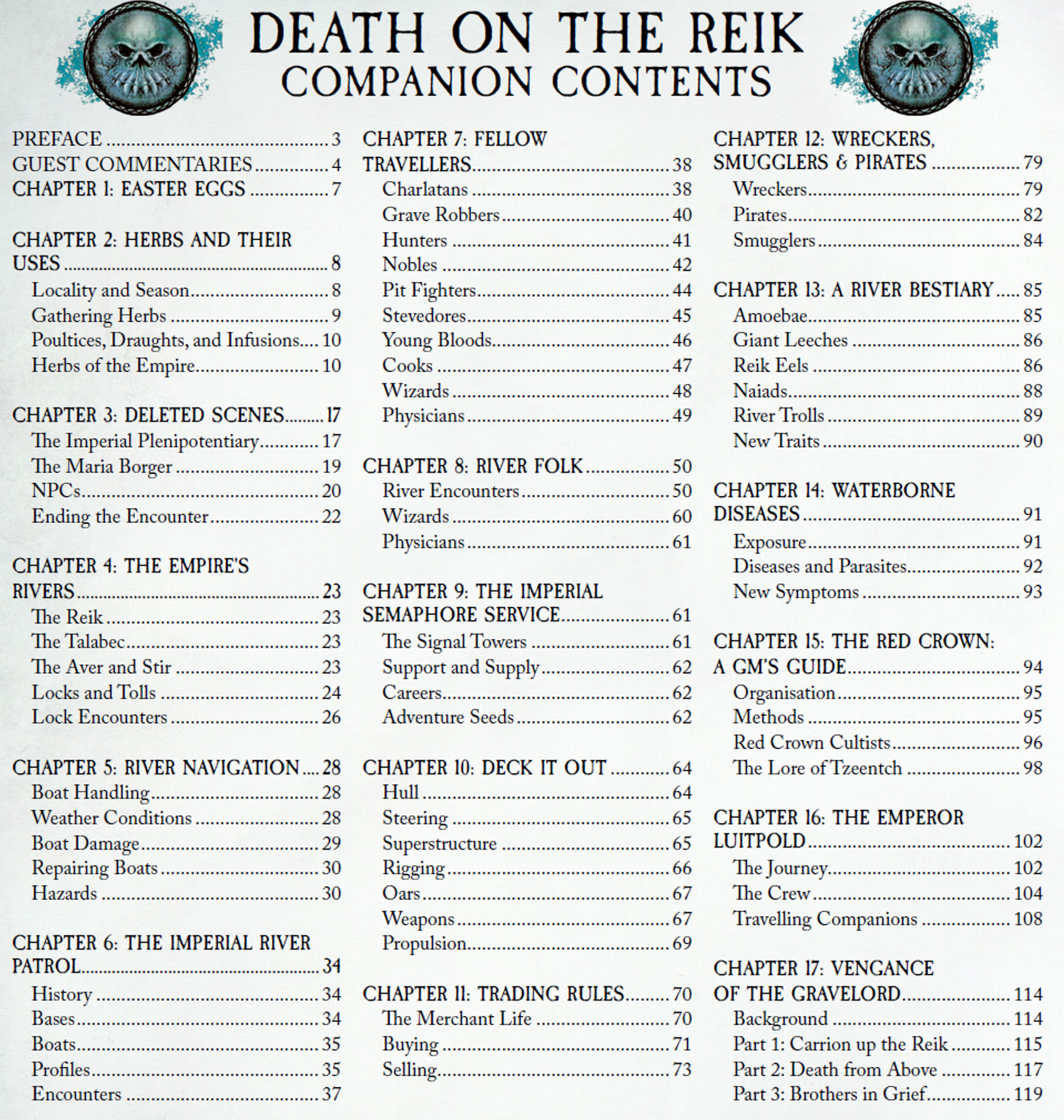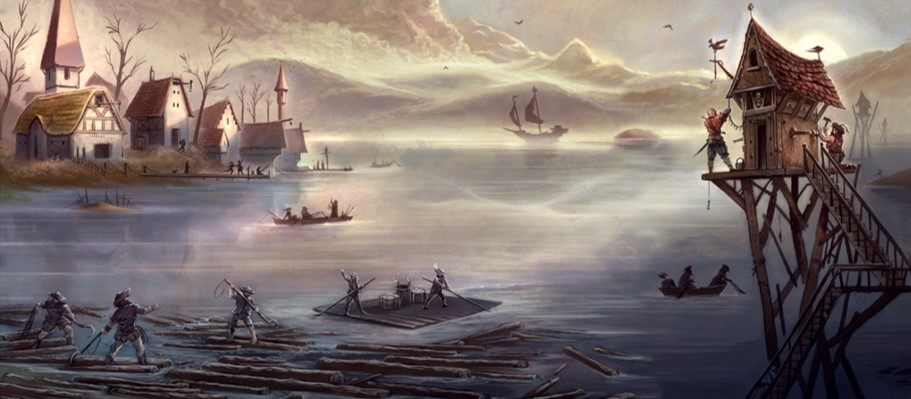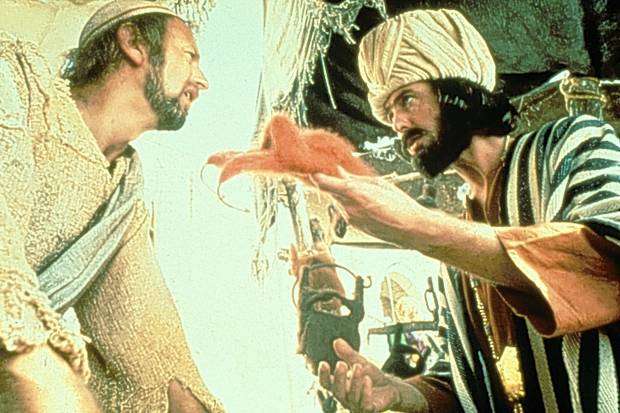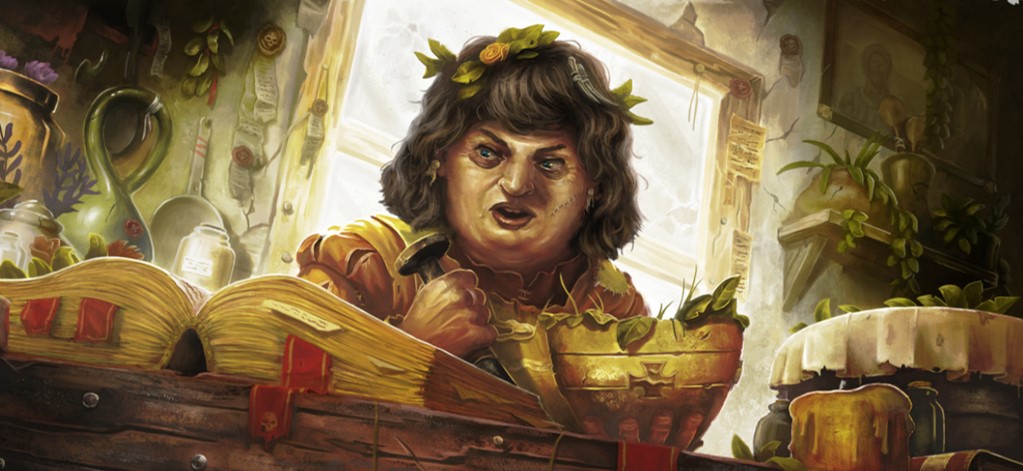Warning. This review contains spoilers for the Enemy Within campaign.
The Death on the Reik Companion is the second of Cubicle 7’s supplementary volumes accompanying the reissued Enemy Within campaign. Like its predecessor, the Enemy in Shadows Companion (reviewed here), it contains a miscellany of articles covering background, rules, NPCs and scenarios that can be used with the main Death on the Reik adventure.
(For more background see my Enemy Within FAQ and review of Death on the Reik.)

PRESENTATION
The Death on the Reik Companion runs to 122 pages in length (excluding adverts). It follows the same presentation as previous WFRP4 volumes, and most of the comments I have made previously apply here also. I should, however, note the welcome inclusion of an index on this occasion. I also have no complaints whatsoever this time about the marvellous cover art.

BURNING BARGES
The Companion starts with a short section about the campaign’s history. There are articles by Martin McKenna, who illustrated the original Death on the Reik in 1987, and James Wallis, who wrote the short adventure ‘Carrion Up the Reik’, which was inserted into the campaign in 1998. There is also a piece by Graeme Davis on Easter eggs. Nearly all of the content has been shared before, but there are one or two new nuggets of information.
A RIVER RUNS THROUGH IT
The bulk of the book concerns river life in the Empire. To start, there are thirteen pages dedicated to travel by boat. They cover a brief description of the major rivers of the Empire; rules for boat handling, weather, locks, hazards, accidents and repairs; and descriptions of different types of river boat.
The account is extensive and detailed. However, as in previous WFRP4 publications, it fails to get to grips properly with the basics of moving from A to B. On this occasion there is no equivalent of the road travel mechanics presented in the Enemy in Shadows Companion. The GM is simply given a selection of movement rates. They would be perfectly adequate, but for the fact the Death on the Reik map has no scale. From the published texts it is simply not possible for the GM to establish how long journeys take. Since much of the main adventure involves a carefully timetabled pursuit, this is an astonishing failure. I suggest GMs apply a scale where approximately 7mm or a quarter of an inch on the map equals 10 miles, or use the distances and times presented in my unofficial companion to the original Enemy Within.
Once this problem has been worked around, the material is likely to be extremely useful to new GMs of the campaign. For grognards, though, it offers little new. It is mostly derived from material included in the original Death on the Reik adventure, but excised from Cubicle 7’s reissue. The main exception is the addition of six pages of modifications to river boats. The PCs now get to pimp their ride with armour, artillery and even steam power. They are a fun addition, though personally I find steam engines jarringly anachronistic.
There is one omission from the original Death on the Reik. The description of river vessels provides profiles and illustrations, but lacks deck plans. It would be useful to have these restored.

TERRORS OF THE DEEP
A couple of chapters, amounting to nine pages, focus on the threats posed by river organisms. There is a short bestiary, covering the amoeba, chameleoleech, tree leech, naiad, Reik eel, river troll and Stirpike. It describes the creatures only briefly, but includes some nice sidebars with background colour. There are also a few new diseases and parasites: cavity worms, Reikworms and the gripe. The cavity worms are particularly unpleasant….
TRADING PLACES
Part of the original Death on the Reik‘s charm is the freedom it affords PCs to trade goods as they travel around the Empire. This was lost in the reprint of the main adventure, but is restored in the Companion. There are rules for trading seven kinds of goods: armaments, foodstuffs, luxuries, metals and ore, timber, wine and brandy and wool. They follow those in the original adventure, but with several improvements. The arithmetic is simplified by the exclusion of trading constants, which were largely unnecessary. The profits available from haggling have been reduced to more reasonable levels. The wealth of the settlement is taken into consideration when calculating selling price, to avoid some of the more eccentric results possible in the original system. There is some more detail on cargos of wine and brandy. Finally, colour is added in the form of trading rumours, which present particular opportunities to make money.
There are a couple of perhaps less desirable changes. The random element of prices has been removed. It simplifies the calculations, but makes trading more predictable. A more serious problem, however, is the omission of several important settlements from the gazetteer. They include settlements the PCs are very likely to visit, such as Grissenwald, and the trading rules rely on the gazetteer. It is a bad error, and detracts significantly from an otherwise good overhaul of the previous system.
The rules still do not present a realistic trading game. They do not take into consideration supply and demand or costs of transport. They are mainly a test of haggling skills. Making money is also much too easy. But the rules should be seen as an entertaining backdrop, rather than a detailed simulation. Should the GM wish, the latter could probably be achieved fairly elegantly with a set of net demand figures for each category of goods in each settlement, overlaid with some random fluctuations. For example, Nuln might have a strong demand for metals (+10 demand), which could be met with supply from mines near Grissenwald (-20 demand, ie oversupply). This would equate to a 20% discount on purchase in Grissenwald and 10% premium on sale in Nuln, enabling a trader to make a healthy profit before random fluctations (say a D20-10% modifier). On the other hand, traders trying the reverse journey (effectively selling coal to Newcastle) would face heavy losses.

“This bloke won’t haggle!”
NEW FACES
Over a quarter of the book (34 pages, to be precise) is given over to NPC descriptions. They follow essentially the same structure as the Enemy in Shadows Companion, with encounter ideas and notes on incorporating the NPCs into the main adventure. Pleasingly, Cubicle 7 has addressed the layout problems in the Enemy in Shadows Companion, and the different components of the descriptions are neatly arranged on the same page.
Much of the content again derives from the river life information in the original Death on the Reik, though parts of it have been expanded substantially. There are details of a wide range of individual travellers: charlatan, cook, duellist, grave robber, hunter, noble, physician, pit fighter, stevedore and wizard. There are also a large number of groups: expedition, fishing boat, merchant boat, passenger boat, pilgrims, pilot boat, river patrol, showboat and even a prototype vessel from a dwarf engineers’ guild.
It is all useful and well-presented content that will be a significant help to GMs of Death on the Reik or any other river-based adventure.
GRASP THE NETTLE
There are a few parts of the Companion that do not relate to river life. One is a nine-page chapter of herbs, intended to dovetail with the encounter with the apothecary in the main adventure. This describes sixteen herbs in total, all of which are taken from the original Enemy Within (1986) and Apocrypha 2: Chart of Darkness (2000). It contains full rules, along with colourful background text from Hortensia Puddlefoot’s Common Herbal and General Concordance of Regional Herb Names. There are also some good illustrations of the herbs, but it is a shame that there are not more; only five of the sixteen are pictured.
Some of the original herbs do not make it to the new edition. Earth Root, Faxtoryll, Nightshade and Salwort are already described briefly in the WFRP4 rulebook and not repeated, though it would be good to see them covered in the greater detail of the Companion. Sigmafoil has been dropped altogether.
Alongside the herbs there are also a new foraging endeavour and a couple of adventure hooks. It’s all good content.

SIGNAL TO NOISE
A brief article of just three pages looks at the new Imperial Semaphore Service, which is responsible for the signalling device in the main adventure (based on the historical machines of Claude Chappe). The article provides a short outline of relevant, but not especially useful, background and four adventure seeds.
A CULT FOLLOWING
There is a nine-page account of the Red Crown cult, which is similar to that of the Purple Hand in the Enemy in Shadows Companion. It contains only general information about the cult’s objectives and organisation, and adds very little to what was known from the earlier version of the campaign. It is disappointing that it does not better support GMs who want to develop the Red Crown plot. There are, though, some additional rules that look useful: a dozen more spells from the Lore of Tzeentch and a Chaos warrior career.
It will be interesting to see whether the cult features in subsequent episodes of the campaign. The new edition of Death on the Reik retains a reference to the Red Crown being active in Middenheim that was never followed up in the original campaign. I would like to believe that this signals that the lead will feature in the revised Power Behind the Throne, but I suspect it is merely a repeated error.
DÉJÀ VU
The Companion also contains three reprints of slightly longer encounters from WFRP‘s first edition.
First is a meeting with an Imperial Plenipotentiary, which appeared in the original Death on the Reik, but not the Cubicle 7 reissue. On its own the incident is short and unremarkable, but the Companion adds some very helpful suggestions on how the Plenipotentiary could play a role in helping the adventurers in Power Behind the Throne and Empire in Ruins.
There is also a cameo adventure called ‘The Maria Borger’, which again appeared in the original Death on the Reik. The plot is lifted straight from the pages of Dracula (1897), and may seem obvious and familiar to many, but it is solidly presented. The new printing adds a few suggestions for further development of the story and a little background on vampires.
The largest of the three reprints is the description of the Emperor Luitpold river liner. This was first printed in White Dwarf 122 (February 1990), and reprinted in the Warhammer Companion (1990) and Apocrypha Now (1995). The new version is for the most part a duplicate of the original, with a detailed description of the vessel and NPCs and three adventure outlines. The only significant changes are a redesign of the vessel, the removal of one NPC and the omission of deck plans. The first two changes make little difference, but the removal of plans is frustrating when the liner is presented as a potential location for adventures. It is not the only underdeveloped aspect of the article. The adventure outlines are sketchy. Overall, the GM is left with a lot of work to do to make the material playable.
None of the reprinted encounters is compelling. One is pedestrian, one predictable and the other incomplete. GMs will be able to get some use out of them, but they might not float your boat.
RUH-ROH!
The Companion contains one scenario that is (mostly) new: ‘Vengeance of the Gravelord’, by James Wallis. This is partly adapted from ‘Carrion Up the Reik’, though the overlap between the two scenarios is small. The only common element is the appearance of the Sigmarite priest Father Marcus and his acolytes, though in ‘Vengeance’ his story follows a very different, and less fortunate, course.
The title sounds a little like an episode of Scooby-Doo, and the plot has something of the same feel. It concerns a histrionic young necromancer, who is infatuated with the Lichemaster Heinrich Kemmler and seeks vengeance on Father Marcus. This he obtains in theatrical style, making full use of illusions to ham up the terror.
The adventure is intended to be part of a series that explores a subplot in parallel to the main campaign. It is, however, no more than a short prelude. It is only seven pages long, and comprises three encounters in which the PCs meet Father Marcus, see him killed and then witness his corpse being apparently reanimated. Without knowledge of the future direction of the story it is difficult to form firm conclusions about it. I am looking forward to a finale in which the unmasked Gravelord blames “pesky adventurers” for his downfall. On its own, however, the scenario does not really amount to a great deal.

“And I would have gotten away with it, too…”
OVERALL
The Death on the Reik Companion is a valuable collection of resources for any GM running adventures set on the river. For GMs of Death on the Reik it is all but essential. The encounters and trading rules really bring the river journeys of the adventure to life.
The Companion‘s main drawback is just that nearly all of the material has been seen before. GMs who own the original Death on the Reik will get little from the Companion other than WFRP4 conversions. But for new GMs of the campaign, it’s a must.
To buy the Death on the Reik Companion from DriveThruRPG, click here.
For my thoughts on the next part of the campaign, Power Behind the Throne, see this link. For my other WFRP4 reviews, see this link.
Title and internal art from Monty Python’s Life of Brian, Scooby-Doo, Where are You! and the Death on the Reik Companion. Used without permission. No challenge intended to the rights holders. Links to DriveThruRPG are affiliate links. I receive a small payment for purchases made through them. This does not change the cost paid by the purchaser. The review copy of the Death on the Reik Companion was purchased at my own expense. I have received no inducements in connection with this review.
I’m really disappointed. This isn’t a new campaign where some flaws are unavoidable – it’s a revision of a classic after more than 30 years of mass playtesting and feedback. That means one can expect higher standards: Errors should have been corrected, inconsistencies and plot holes addressed, and the result should now play smoothly.
Instead, everything seems to have been hastily cobbled together. Good thing that we have you, who is intimately familiar with the original, point out all those flaws which are not immediately obvious!
LikeLiked by 4 people
I can’t help but agree. Rather than resolve issues and correct errors this new edition of the The Enemy Within Campaign seems to have added some, and whilst there is a smattering of new material some original content has been omitted. Thus far, all in all, putting aside the edition specific system mechanics, if i had to choose between the first edition of the campaign or the fourth edition of the campaign then i don’t know which i would choose and i think i would want to get both, splice them together, and then do some work to address the problems myself. That’s poor.
LikeLiked by 2 people
Hi there, I agree – as someone who is familiar with 1e and has several source books for it – I am finding that to get the most out the campaign I am having to use a combination of 1e and 4e sources. I am really grateful for Cubicle 7’s beautiful new books, but they do seem to ommitted some useful stuff from the earlier editions
LikeLike
Aren’t “TERRORS OF THE DEEP” and “TRADING PLACES” additions from WFRP2’s Companion?
LikeLiked by 1 person
I don’t know WFRP2 material so well, but I have quickly scanned The WFRP Companion. You are right that amoeba, chameleoleech, naiad, stirpike and Reikworms are in there. There are trading rules, as well, but they look quite different from those in Death on the Reik.
Of course, amoeba, chameleoleech, and monstrous leech also appeared in WFRP1.
LikeLike
And the stirpike appeared in 4e in one of the Ubersreik Adventures.
LikeLike
Two things I’m unclear on from your review, does the new edition have (1) a random River encounter table ala first edition’s? And if so, how does it compare (longer, shorter, more/less specific, etc.)? (2) Do the additional ship types profiled have deck plans? Really trying to determine if it’s worth it to pick this one up, I’ve mostly been using the new editions for the art and slightly more understandable presentation , but without deck plans or a better random river encounter chart seems unjustifiable
LikeLike
(1) I don’t think there is a random table. There are lots of encounters, but I think it is assumed the GM uses his or her discretion, rather than random generation.
(2) No, there are no deck plans, regrettably.
LikeLike
HOw can there be no random encounter table? That was one of the best parts of the original, I even spent time manifetsing it as a Google Sheet: https://therantingsavant.blogspot.com/2018/10/death-on-reik-riverine-encounter.html
LikeLiked by 1 person
Cubicle 7 have an errata page. Grissenwald missing is hopefully an oversight (rather than some obscure opaque reason) and flagging it will get it addressed.
https://www.cubicle7games.com/our-games/errata-submission/
LikeLiked by 1 person